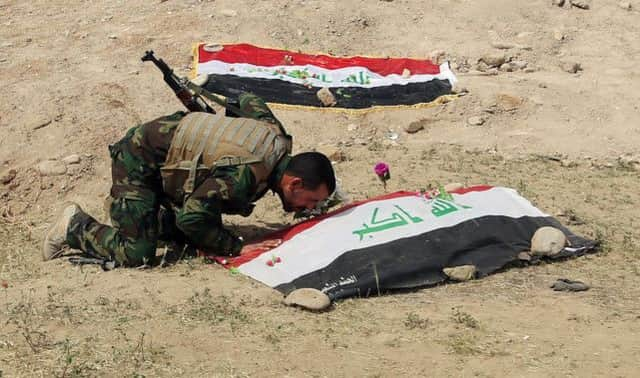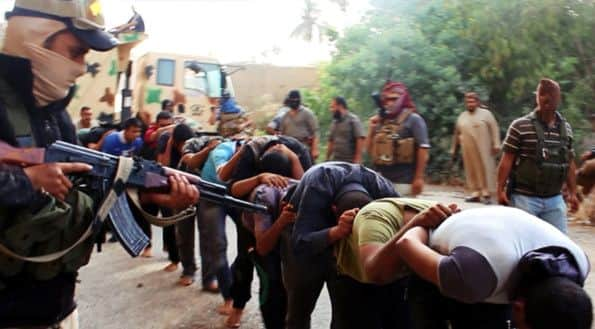Mass graves horror as Iraqis liberate Tikrit


Kamil Amin, from Iraq’s human rights ministry, said the work started on Monday on eight locations inside Tikrit’s complex of presidential palaces, where much of the killing is believed to have taken place.
IS militants overran the hometown of former Iraqi dictator Saddam Hussein last June, capturing around 1,700 soldiers as they were trying to flee Camp Speicher, an air base previously used by United States troops on the outskirt of Tikrit.
Advertisement
Hide AdAdvertisement
Hide AdThe fall of Tikrit was part of the IS onslaught that stunned Iraqi security forces and the military, which melted away as the militants advanced and captured key cities and towns in the country’s north and west.


Later, IS posted graphic images online that appeared to show its gunmen massacring scores of the soldiers after loading the captives on to flatbed trucks and then forcing them to lie face-down in a shallow ditch, their arms tied behind their backs.
Other videos showed masked gunmen bringing the soldiers to a bloodstained, concrete river waterfront inside the presidential palaces complex in Tikrit, shooting them in the head and throwing them into the Tigris River.
After weeks of bitter clashes, Iraqi forces and allied Shiite militias succeeded in retaking Tikrit from Islamic State. Their victory was helped by US-led coalition air strikes, which were not initially part of the operation.
Mr Amin said at least 12 bodies were exhumed on Monday. Laboratory tests will be carried out to match them with DNA samples that have already been taken from the families of around 85 per cent of the victims.


Iraqi state TV showed forensic teams digging in an open area, helped by bulldozers as family members stood nearby. The bodies were labelled with yellow tags while weeping soldiers and relatives lit candles and laid flowers alongside the covered remains.
One clip showed unearthed skeletal remains still wearing combat boots. “The work is continuing and we expect to discover more mass graves in different areas,” Mr Amin said. “We expect huge number of bodies to be unearthed.”
During their blitz last year, the IS extremists also carried out other mass killings in other areas. One of those massacres was outside Iraq’s second-largest city of Mosul – a city of about one million people – where they forced some 600 Shiite inmates captured from Badoosh prison to kneel along the edge of a ravine and shot them with automatic weapons. The prisoners had been serving sentences for a range of crimes, from murder and assault to non-violent offences. In Anbar province, the militants shot dead dozens of pro-government Sunni tribal fighters in public areas after capturing their towns. The IS onslaught plunged Iraq into its worst crisis since the 2011 US troop withdrawal. The militants have also targeted Iraq’s indigenous religious minorities, including Christians and followers of the ancient Yazidi faith, forcing tens of thousands from their homes in northern Iraq.
Advertisement
Hide AdAdvertisement
Hide AdSince then, IS has carved out a self-styled caliphate in the large area straddling the Iraqi-Syrian border that it now controls. In August, the US launched air strikes on the militant group in Iraq, in an effort to help Shiite-led Iraqi forces fight back against the growing threat by the IS militants, who still hold the northern Iraqi province of Nineveh and most of the western province of Anbar, in addition to small areas north of Baghdad, along with a large swathe of land in civil-war torn Syria.